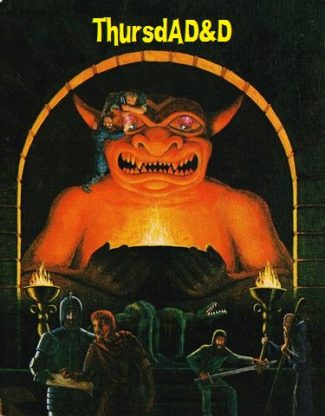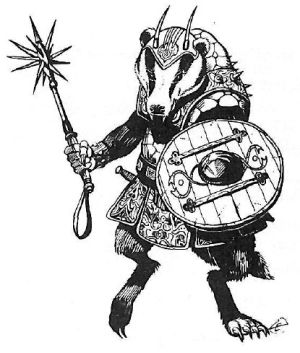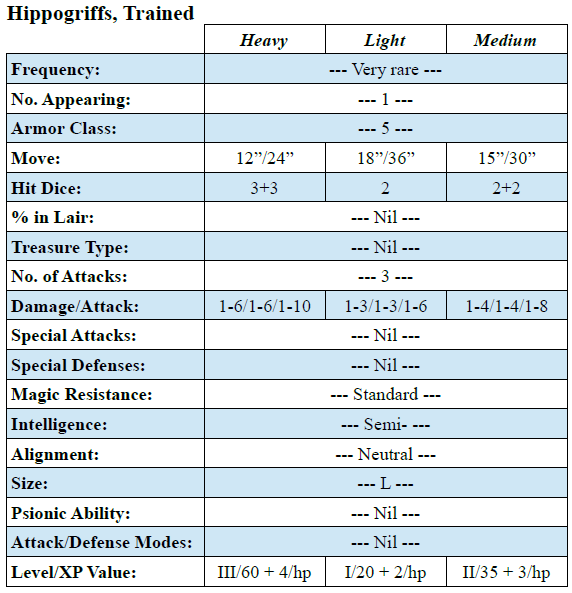Tuesday Terror: Sveppadýr
This week’s Tuesday Terror can be viewed at this link. It think that site is the sculptor’s, who goes by the pseudonym steambastet. Below is what I think the creature in the picture could be as a D&D monster.

Despite its appearance, the sveppadýr is not undead, but instead is a plant creature, an amalgam of roots, fungus, bone, and vines that occurs in spontaneous response to the wanton slaughter of wildlife. It stalks poachers, despoilers, and hunters alike.
Sveppadýr
Huge plant, unaligned
Armor Class 16 (natural armor)
Hit Points 114 (12d12+36)
Speed 60 ft.
STR 21 (+5), DEX 14 (+2), CON 16 (+3), INT 5 (-3), WIS 14 (+2), CHA 8 (-1)
Skills Perception +6, Stealth +6
Damage Resistances cold, fire; bludgeoning
Damage Immunities lightning; piercing and slashing from attacks made by plants or with wooden weapons
Condition Immunities blinded, deafened, exhaustion
Senses blindsight 120 ft. (blind beyond this radius), passive Perception 16
Languages understands Common, Elvish, and Sylvan but can’t speak them
Challenge 9 (5,000 XP)
Charge. If the sveppadýr moves at least 20 feet straight toward a target and then hits it with a ram attack on the same turn, the target takes an extra 9 (2d8) damage. If the target is a creature, it must succeed on a DC 16 Strength saving throw or be knocked prone. If the target is prone, the sveppadýr can make one hooves attack against it as a bonus action.
Hunter Becomes the Prey. The sveppadýr knows the distance to and direction of any creature that has killed a beast, fey, or plant within the past 24 hours, so long as the sveppadýr and the killer are no more than 5 miles apart.
Magic Resistance. The sveppadýr has advantage on saving throws against spells and other magical effects. The sveppadýr always makes its saving throws against spells and other magical effects that use plants (such as entangle).
Regeneration. As long as the sveppadýr is touching the ground, it regains 5 hit points at the start of its turn. If the sveppadýr takes cold or fire damage, this trait doesn’t function at the start of the sveppadýr’s next turn. The sveppadýr’s body is destroyed is destroyed only if it starts its turn with 0 hit points and doesn’t regeneration.
Rejuvenation. When the sveppadýr’s body is destroyed, its spirit lingers. After 24 hours, the spirit grows a new body within 1 mile of the old body’s place of demise. The sveppadýr regains all its hit points. While the spirit is bodiless, a banishment spell (or similar magic) can be used to destroy the spirit and prevent its rejuvenation.
Woodland Camouflage. The sveppadýr has advantage on Dexterity (Stealth) checks made to hide in forested terrain.
Actions
Multiattack. The sveppadýr makes two attacks: one with its ram and one with its hooves.
Ram. Melee Weapon Attack: +9 to hit, reach 10 ft., one target. Hit: 14 (2d8+5) bludgeoning damage.
Hooves. Melee Weapon Attack: +9 to hit, reach 5 ft., one target. Hit: 27 (4d10+5) bludgeoning damage.
Wall of Thorns (Recharges after Short or Long Rest). The sveppadýr creates a wall of tough, pliable, tangled brush bristling with needle-sharp thorns. The wall appears within 120 feet on a solid surface and lasts for 10 minutes. The sveppadýr chooses to make the wall either up to 60 feet long, 10 feet high, and 5 feet thick, or a circle that has a 20-foot diameter and is up to 20 feet high and 5 feet thick. The wall blocks line of sight, but not the sveppadýr’s blindsight.
When the wall appears, each creature within its area must make a DC 16 Dexterity saving throw. On a failed save, a creature takes 31 (7d8) piercing damage, or half as much damage on a successful save.
A creature can move through the wall. For every 1 foot a creature moves through the wall, it must spend 4 feet of movement. Furthermore, the first time a creature enters the wall on a turn or ends its turn there, the creature must make a DC 16 Dexterity saving throw. It takes 31 (7d8) slashing damage on a failed save, or half as much on successful one.





